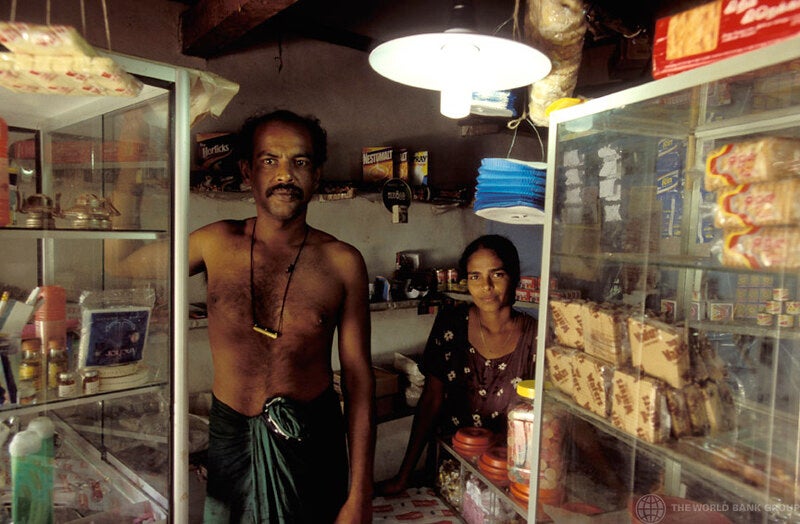What Do Low-Income Customers Want from Asset Finance?
Financial services are critical to achieving asset ownership at scale. But even as nascent industries like off-grid energy financing put valued assets in the hands of millions of low-income customers, our understanding of these customers’ needs and preferences remains limited. So we asked the question: What do customers really want when it comes to asset finance?
To shed light on this question, CGAP has spoken with dozens of asset finance providers and their customers in developing countries. They range from microfinance institutions offering loans for motorbikes to rural e-commerce companies financing refrigerators and televisions. The key takeaways include six lessons on how asset finance can drive value for the next billion customers.
1. Don’t expect customers to pay for an asset they can’t use
The golden rule of asset finance is if it stops working, they stop paying. Clients should not be expected to pay for a malfunctioning asset, just as they should not be expected to use a pay-as-you-go (PAYGo) unit when they have not paid. Warranties and insurance are critical components of any asset finance product, as they de-risk the acquisition of things people need. Warranties allow customers to access after-sales service to keep their asset in good working condition (and the repayments flowing). And insurance on assets like livestock means that the borrower is not liable for debt on an asset that falls ill or dies. Taken together, these services make asset finance less risky for low-income borrowers and are essential to a successful model. However, do not expect customers to voluntarily adopt insurance or warranties, as these financial assets are typically valued only after they are used. Instead, bundle warranties or insurance with the financing provided to all customers.
2. Let customers choose the assets and financing options that are right for them

Asset finance providers that seek to reach low-income households — whether banks, microfinance institutions, manufacturers, distributors or nonbank financial institutions — typically specialize in a small number of assets to maximize sustainability. This is particularly true of manufacturers, distributors and retailers, which often use financing to sell their products to customers who are otherwise unable to afford them. However, providers that offer a narrow range of assets will not be able to fully address the diverse needs and preferences of low-income customers.
To give customers greater choice in assets, some providers specialize in one asset category but offer a range of selections when it comes to brand and price point. For example, PayJoy enables customers around the world to choose from several smartphone brands and price points and to pay for their phone in installments. Other companies, such as Dharma Life, choose to specialize in distribution networks that offer a variety of in-demand products and financing to their customers. In other cases, financial institutions partner with original equipment manufacturers and retailers to offer third-party financing for several brands within one or more asset classes. A good example is Equity Kenya’s Eco Moto program. The program partners with a network of merchants who sell a curated selection of assets like clean cookstoves and solar home systems, with financing provided by Equity Bank.
Choice is also important when it comes to financial products. Many low-income households are skeptical of financial institutions, do not qualify for financing from a bank or microfinance institution or lack the regular cashflows required to service a traditional equal monthly installment loan. To offer more flexible alternatives, some distributors and retailers choose to structure their own financing options that cater to different risk preferences. PAYGo financing, pioneered by solar home system manufacturers, is a great example of a flexible financing option. It allows customers to match repayments to their cashflows. In other cases, businesses selling assets may choose to partner with several third-party financial service providers so that customers who want to buy an asset can choose how and from whom they borrow.
3. Build flexibility into the loan structure and deposit size
A flexible structure and repayment terms are crucial for low-income asset finance customers. Not everyone wants to take out a loan to acquire assets, and not every client who wants a loan should have one, at least not in full. Providers can and should require riskier borrowers to pay higher deposits, but they also can make it easier for them to do so. Layaway (or ‘"layby") models allow lower-income borrowers to set aside money over time for a purchase — or even for a deposit on financing — creating a layaway-to-credit model. Layaway may not provide the same instant gratification that traditional financing offers, but in many cases it allows low-income customers access to the same assets at lower cost and risk of over-indebtedness.
4. Not all customers can afford financed assets; subsidies can help, but be cautious
Sometimes, life-transforming assets are too expensive for households that need them, even when those households have access to financing. In these cases, subsidies can make assets more affordable. But choosing when to rely on subsidies can be complicated. Customers will gravitate toward any model that includes a subsidy, making it incumbent on asset finance providers to consider whether subsidies are appropriate, and if so, how to discretely and efficiently target subsidies to those most in need. Critical assets such as water purifiers, toilets or housing may warrant subsidies from government or donors to achieve a development outcome. But any subsidy will create market distortions that make it difficult for the private sector to offer sustainable financing at scale.
5. Terms should be transparent and allow for easy comparisons
Asset finance brings together consumer protection issues in two categories: product and finance. The GOGLA Consumer Protection Principles offer a roadmap: consumers should be well-informed of their rights and of the terms, conditions and overall cost related to both product and financing. This type of transparency allows customers to compare offers while ensuring they understand how much they are paying and the consequences of missing payments or defaulting.
Credit often is seen as a way to drive sales volumes, but it can cause vulnerable customers to become over-indebted. In some cases, customers may not need what a company is selling. Companies should resist push-marketing that ignores the true demand for an asset and avoid creating incentives for agents to engage in that kind of marketing. In other cases, customers simply may not be able to afford the asset, in which case there are alternatives to credit, such as renting or layaway.
6. Focus on sustainability
Managing risk means saying no, even to people who need what you are financing. Some models, such as PAYGo solar, have achieved a degree of scale but have yet to prove their sustainability, in large part because credit risk is not yet being managed effectively. Durable models will have profitable unit economics and keep their finance terms as short as possible, since consumer finance requires learning from past loans and fine-tuning your credit scoring models. To do this while maintaining affordability, providers must finance high-quality products that are produced at great scale, as this keeps product and service costs manageable. And sometimes, providers need to develop noncredit mechanisms for serving poor customers. In the months to come, CGAP will share more insights about how companies can manage risk in asset finance. The first step, and the most important, is to figure out how to give customers what they want in a sustainable way.




Add new comment